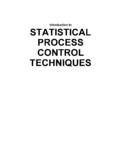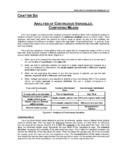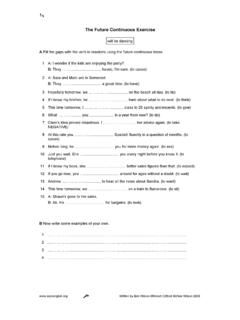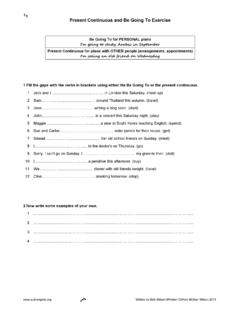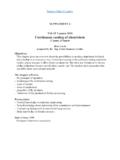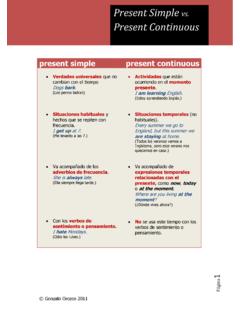Transcription of Introduction to CONTINUOUS QUALITY …
1 Introduction to CONTINUOUS . QUALITY . IMPROVEMENT. TECHNIQUES. for Healthcare Process Improvement STATIT QUALITY CONTROL FIRST AID KIT. Preface 1. QUALITY Control and Healthcare Today 1. New Demands On Healthcare Systems Require Action 1. Continous QUALITY Improvement (CQI) In Healthcare A Natural Fit 1. Socratic CQI -- Overview Q&A 2. Steps Involved In Using CQI 7. Specific CQI Tools And Procedures 8. Identification and Data gathering 8. Prioritizing 8. Pareto Charts 8. Analysis Of Selected Problem 10. Cause-and-Effect or Fishbone Diagram 10. Flowcharting 11. Scatter Plots 12. Data Gathering And Initial Charting 13. Check Sheets 13. Histograms 13. Probability Plot 14.
2 Control Charts 15. Fundamental Concepts And Key Terms 15. Rules Testing 16. Zones In Control Charts 16. Control Limits 17. Subgroups 18. Phases 18. Using Process Control Charts 19. Data Definitions For Proper Chart Selection 19. 2007 Statit Software, Inc., 1128 NE 2nd Street, Ste 108, Corvallis, Oregon 97330 iii STATIT QUALITY CONTROL FIRST AID KIT. Types Of Charts Available For The Data Gathered 21. Variable Data Charts Individual, Average And Range Charts 21. Individual Charts I chart 21. Average Charts X-bar Chart 22. Range Chart R-Chart 23. Moving Range Chart MR Chart 24. Combination Charts 25. Individual And Range Charts IR Charts 25. Average & Range Charts X-Bar And R Charts 26.
3 X-Bar Standard Deviation Charts X-Bar And S Charts 27. Process Capability Chart cp Chart 28. Attribute Data Charts 29. Attribute Charts Defects and Rejects Charts 30. Defects Charts 30. c Chart Constant Subgroup Size 30. u Chart Varying Subgroup Size 31. Rejects Charts 32. np Chart Number of Rejects Chart for Constant Subgroup Size 32. p Chart Percentage Chart for Varying Subgroup Size 33. Conclusion Time to put it all together 34. Appendix 1: AT&T's Statistical QUALITY Control Standards 35. Glossary 37. Bibliography 44. URLs 44. iv Preface QUALITY Control and Healthcare Today As we enter the new millennium, healthcare organizations are facing new challenges and must continually improve their services to provide the highest QUALITY at the best cost.
4 Pressures to increase the QUALITY and lower the cost of healthcare are coming from accreditation boards, the media, and comparisons with other facilities, HMOs and government agencies. New Demands on Healthcare Systems Require Action Accountability with hard data, not fuzzy opinions, is being demanded. Existing processes must be examined and new ones discovered. The good news is that improved QUALITY inherently lowers costs as it provides better service. CQI provides accountability and is an essential ingredient in this QUALITY effort. CQI is not an abstract theoretical exercise for mathematicians. It is a hands-on endeavor by people who care about their work and strive to improve themselves and their productivity every day.
5 CQI charts are a tool to assist in the management of this endeavor. The decisions about what needs to be improved, the possible methods to improve it, and the steps to take after getting results from the charts are all made by humans and based on wisdom and experience. Everyone should be involved in this effort! CQI In Healthcare A Natural Fit CQI has been used in the manufacturing world more extensively than in the healthcare field. However, the underlying foundation of medicine is in fact quite closely tied to the principles of CQI. This includes the observation of a phenomenon, isolating variables and changing the process, observing the results and taking action.
6 If the results are beneficial, continue with the change and look for the next area to improve. If the results are adverse, discard them and try something else. Continue to observe the results until a pattern of foreseeable results emerges from performing certain actions. CQI is easy for healthcare professionals to learn since it is based on this basic scientific model of discovery. As healthcare professionals learn the concepts and strategies behind CQI, they will infuse their scientific background and experience into the program. Innovative measures and positive results follow quickly. These results include higher QUALITY of service delivered, happier patients and customers, and lower costs.
7 QUALITY Control has proven time and again to cut costs dramatically. Leaders in every field constantly strive for improvement, working toward the highest QUALITY possible. In no field can the rewards of this effort be greater than in healthcare. Improved QUALITY not only can improve the QUALITY of life, it can actually give life, extend life and permit life! In no other domain can the benefits of QUALITY improvement prove so beneficial and the lack thereof is so costly. STATIT QUALITY CONTROL FIRST AID KIT. Socratic CQI -- Overview Q&A. So what is CQI? CQI is an analytical decision making tool which allows you to see when a process is working predictably and when it is not.
8 Variation is present in any process, deciding when the variation is natural and when it needs correction is the key to QUALITY control. Where did this idea originate? The foundation for CQI was laid by Dr. Walter Shewart working in the Bell Telephone Laboratories in the 1920s conducting research on methods to improve QUALITY and lower costs. He developed the concept of control with regard to variation, and came up with CQI Charts which provide a simple way to determine if the process is in control or not. Dr. W. Edwards Deming built upon Shewart's work and took the concepts to Japan following WWII. There, Japanese industry adopted the concepts whole-heartedly.
9 The resulting high QUALITY of Japanese products is world renowned. Dr. Deming is famous throughout Japan as a "God of QUALITY ". Today, CQI is used in manufacturing facilities around the world. CQI is rapidly becoming required in Healthcare and other service industries as well. What exactly are process control charts? A control chart overtime shows the variation in a measurement during the time period that the process is observed. In contrast, bell-curve type charts, such as histograms or process capability charts show a summary or snapshot of the results. Process control charts are fairly simple-looking connected-point charts. The points are plotted on an x/y axis with the x-axis usually representing time.
10 The plotted points are usually averages of subgroups or ranges of variation between subgroups, and they can also be individual measurements, proportions, or defects/units, etc. 2. STATIT QUALITY CONTROL FIRST AID KIT. Some additional horizontal lines representing the average measurement and control limits are drawn across the chart. Notes about the data points and any limit violations can also be displayed on the chart. What is the purpose of control charts? Control charts are an essential tool of CONTINUOUS QUALITY control. Control charts monitor processes to show how the process is performing and how the process and capabilities are affected by changes to the process.
